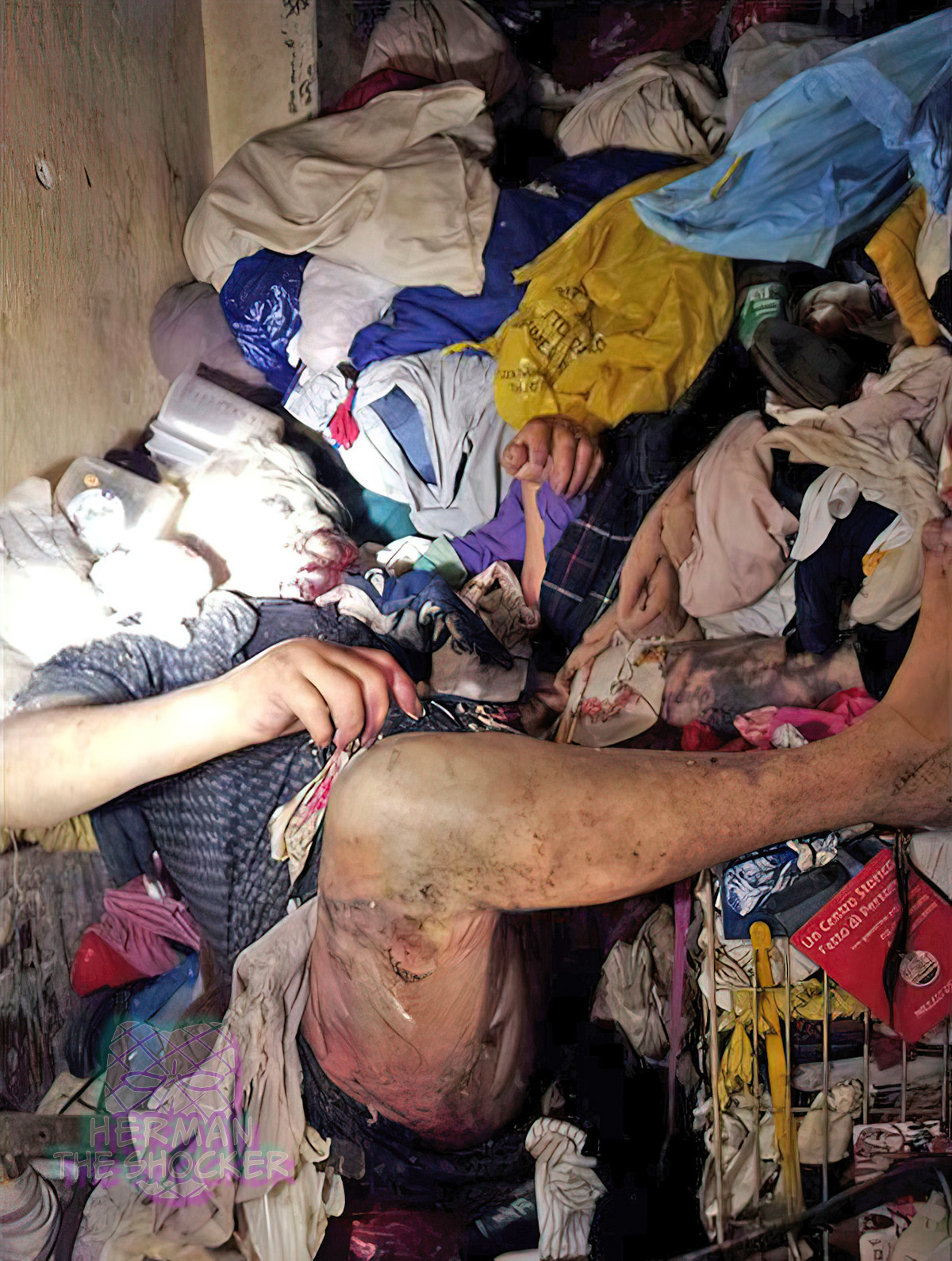Italy – A 75-year-old woman affected by hoarding disorder was found dead in her apartment. The woman’s family had not seen or spoken to her for several days. Due to the concerns of her relatives Emergency Services were called to inspect the woman’s apartment. When the firemen arrived, they broke down the main door of the apartment, finding a wall of objects that blocked the entrance. Among what remained of the door and the objects, the firemen saw a human leg; they immediately called the forensic pathologist and crime scene investigators.
Hoarding is described as the acquisition of, and failure to discard, possessions of little use or value to others. It is usually associated with a significant level of clutter in the individual’s living areas to the extent that the areas intended use is compromised.
Examination of the scene was limited to the doorway of the apartment due to the large volume of cluttered objects inside the dwelling. The objects, that included mainly plastic bags (containing journals and little plastic items), books, and clothes, occupied the whole apartment, floor-to-ceiling. Firemen, with the cooperation of the forensic pathologist, removed all the objects that covered the body, in order to make it possible for an external examination to be conducted and to facilitate subsequent transfer to the morgue, where further forensic examination and chemical analysis were to be performed.
External examination of the body revealed advanced decomposition with brown/green skin changes, bloating, foul odor, skin and hair slippage, and bloody fluid purging from the mouth and nostrils. The eyes were shrunken and the swollen tongue, protruding from the mouth, did not reveal any sign of biting that would be suggestive of a seizure.
Scene examination performed by the forensic pathologist ruled out any doubts regarding the original position of the woman at the time of her death and her complete coverage by the hoarded objects. It must be noted that, in this case, traumatic asphyxia was not established based on the presence of external or internal organs injuries; the absence of such injuries could be due to the relatively low weight of the objects that collapsed over the woman, which were mostly journals and plastic bags.
The event was considered accidental and took place while entering or exiting the apartment. In this circumstance the woman, who was trying to open or close the door, was possibly using her leg to keep the objects piled behind the door from falling. Unfortunately, the pile of hoarded objects collapsed and the woman remained fatally trapped under them.
The essential feature of traumatic asphyxia is the fixation of the thorax by external pressure that prevents respiratory movements. This is perhaps one of the purest types of asphyxia and it is characterized by the classic signs of congestion, cyanosis and petechiae. Additionally, a florid red or blue congestion of the face and neck may be observed, as well as extensive eye petechiae and ecchymosis. The victim may have injuries sustained from the compressing agent but, if the pressure has been broad, there may be no sign of trauma on the body, as it is the case here.
Most authors consider confined space asphyxia as a subtype of suffocation, therefore there is no univocal definition of this type of asphyxia. Briefly, it can be considered as the reduced availability of oxygen that occurs when individuals find themselves trapped in extremely confined spaces; the available oxygen is exhausted and not properly replaced, which eventually leads to asphyxiation.
In cases of non-violent asphyxiation, the cause of death cannot be determined by autopsy alone; an analysis of the circumstances leading to and surrounding death and the exclusion of other causes of death are mandatory.
The most important features of this case:
- The scarcity of available oxygen.
- The woman’s position that prevented, directly or indirectly, adequate breathing.
- The impossibility for the woman to extricate herself from the fatal position.
- The absence of a deliberate action of another individual.
- The absence of evidence of internal airway obstruction.
- The absence of evidence of a toxic cause of death.
- The absence of significant anatomic pathologic changes at autopsy (e.g. intracerebral hemorrhage, ruptured myocardial infarction).
In this case the investigators recognize the role of both traumatic and confined space asphyxia. Moreover, the scarcity of space between the collapsed objects and the woman forced her to be lying in a position in which her neck was hyperflexed; this leads to a further hypothesis that positional asphyxiation may have had a role in the death and it is possible that in this position the woman was not able to breathe freely, leading to a further decrease of oxygen. Other important features that may have played a role in the death were the old age and possible weakness of the woman, which could have prevented her removing the collapsed items from on top of her.
Latest posts











